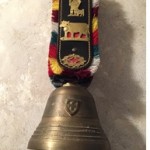Another pathway for the reluctant advocate.
All aHUS Patients and their families have had their own aHUS experience. When it hit them most knew nothing of the disease itself but they soon learned about what it did and felt like.
Bit by bit they would begin to understand why it might have hit them . But only “Bit by Bit” over the years; a decade or more ago there were very few sources of information about aHUS. More often than not their clinicians knew little too.
I was the same.
Although my family’s encounter with aHUS went back decades I knew little when I attended the first UK aHUS conference hosted by Prof. Tim Goodship in Newcastle upon Tyne. Some of what I learned there stuck.
I also watched video recordings of the conference presentations several times to try to understand more. There was a lot of medical jargon to get past , and even when that was got past , the more that was learned the more questions came to mind.
When I was reading all the evidence provided for the evaluation of eculizumab by AGNSS, I was in a privileged position , unique in fact. I learned so much about many facets of aHUS, but also learned “how to understand” some very complex issues. I likened the process to the way 3D images appear from one of those computer generated confusing patterns .
The more I read the more that certain things jumped out of the page at me. Somethings did not, so I would put those to one side and more often than not they would crop again in another context and their meaning and significance would become apparent
Also, because I was struggling to understand topics, I could empathise with others who were also struggling . Certain topics like “what is a Rare Disease ? “ “what is the difference between the incidence and the prevalence of aHUS ?” , “Why does aHUS not happen to all in families? “ “Why does aHUS have barriers to diagnosis? “ “What precisely is it about Complement that makes it a problem for aHUS patients? I tried to find why they matter to those with aHUS.
As someone who has an interest in history I began to explore the history of the disease, about key discoveries and notable researchers. I began to notice that most articles about aHUS ,ten or more years ago , mentioned someone called Von Gasser. I delved into the work of Von Gasser and found that he , in his hospital in Zurich had coined the term “Haemolytic Ureamic Syndromes” to give a name to the disease he had identified in several children in his hospital.

In time I learned more about him from aHUS researchers who knew Von Gasser. Prof Tim Goodship told me about a book written by Prof Bernard S Kaplan entitled “The Birth of HUS “ Eventually I made contact with Bernard and he gave me an electronic copy of the book. Reading that book about Von Gasser I even discovered the name of the first patient to be given “Haemolytic Uraemic Syndrome” as the cause of their death. He crossed out the baby’s original diagnosis, and wrote the three words which has described our illness since in his own handwriting. When Von Gasser finally published his discovery he said the term covered syndromes, that use of the plural was significant.
A baby whose surname was Bodmer. “Baby Bodmer” , as I called him/her, was the first named HUS patient and was a patient at Zurich Children’s Hospital, 65 years ago this year.

From Prof Kaplan I also learned about Von Gasser’s “Swiss Cow Bell “ and he sent me a photograph of it. The bell is now in his safe keeping.
Some years later I got to visit the Children’s Hospital in Zurich (Kinderspital Zurich), where Von Gasser had practiced , to visit a Dr Gesa Schalk , the then lead pediatrician / nephrologist ( Von Gasser died in 1982). When I was in the waiting room of the nephrology ward, a cowbell was rung to mark the end of the morning ward round. It was just part of the routine for them, but such a surprise to me, it raised goosebumps.
From 2014 onward I began to write articles on the aHUSUK website about all the topics I had researched, and tried to explain them to readers as I had explained them to myself. I was very cognisant of how I had found them difficult to grasp and understand.
Advocates do need to know more than their own experience . It makes them more able to advocate about the disease in a rounded way for others and not just about themselves.
So as a lay person, in a unique and privileged position, I was getting to know more and more about aHUS. The key thing I got to know about aHUS is that there is far too much to be able to know all. That does not stop anyone asking questions about what matters and seeking more answers to them. In time it would be surprising what we can learn.
On Rare Disease Day 2019 the alliance will be formally launching the “Global aHUS Patients’ Research Agenda”. A list of research questions about aHUS by aHUS patients. Together we can get more answers.
You are not alone We can find a way
More about The reluctant advocate’s journey can be read at this link here.

